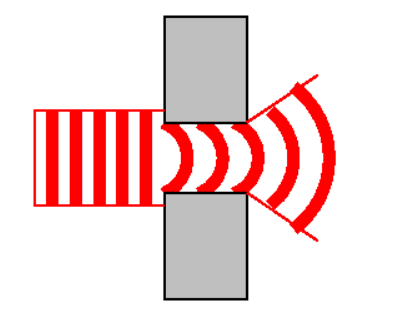I've read quite a few posts asking a similar question but I suppose I'm still not quite satisfied with the explanations (hence the question). I'm aware that diffraction always occurs and I know the Huygens-Fresnel principle (other answers have referred to it but I don't see how it helps), but for my own intuition I want to ask in particular about the following image as this is the famous one I see everywhere and I want to try to make sense of what's going on.
Knowing that each vertical line corresponds to the crest of a wave, and thus the distance between them corresponds to the wavelength, I want to (pictorially if possible) understand why the slit must be on the order of this separation for the radial wave pattern to be most apparent? It does not appear obvious to me why this matters, as in my mind I could understand if one vertical line entered the split and became radial by way of the image below, where one of the previous answers said, "If the hole is smaller than λ , the beam will "bend" in order to keep its length and fit into the hole, as is sketched on the following picture, zoomed on the hole (I have drawn the beam as a train of stems that bend when entering the hole)".
However, if there's a dependence on the wavelength, then there's a dependence on other vertical lines coming in to become radial and it's this that I want to understand. Maybe I have misunderstood something else which is confusing me, so if anyone could help give me an intuition of this then that would be greatly appreciated.


